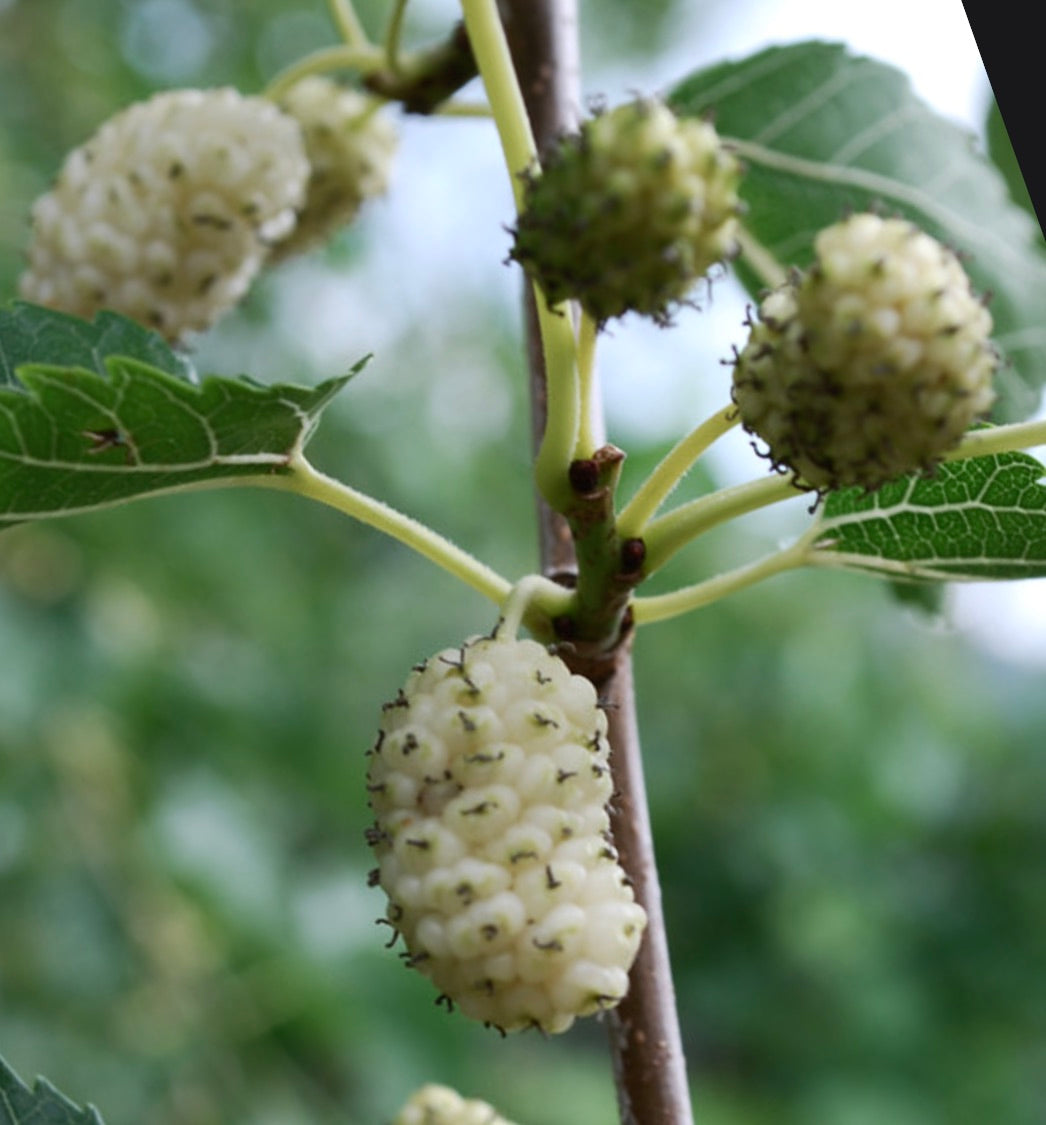- Catalogue Plants
Morus alba 80-100cm
Morus alba 80-100cm
Couldn't load pickup availability
Plant Description
Morus alba, commonly known as the White Mulberry, is a deciduous tree native to Asia, particularly China. This versatile tree is well-known for its sweet and juicy fruits, which are used for culinary purposes and enjoyed fresh or dried. White Mulberries are also valued for their attractive foliage and shade-providing qualities. The tree typically grows to a height of 30 to 50 feet (9 to 15 meters) and is a popular choice for gardens, orchards, and landscapes.
The leaves of Morus alba are the primary food source for silkworms, which are responsible for producing silk. These leaves are typically heart-shaped and dark green, creating a lush canopy during the growing season. In late spring to early summer, the tree produces small, inconspicuous flowers that give way to clusters of sweet and elongated fruits. These fruits can vary in color from white to pink, red, or black, depending on the cultivar and ripeness. White Mulberries are known for their sweet flavor and can be eaten fresh, used in cooking, or dried as a nutritious snack.
Cultivation:
-
Sunlight: Morus alba thrives in full sun, but it can tolerate partial shade. Plant it in a location that receives at least 6 hours of direct sunlight each day for optimal fruit production.
-
Soil: Well-draining, loamy soil with good organic content is ideal. White Mulberries prefer slightly acidic to neutral soil pH. Ensure proper drainage to prevent waterlogged roots.
-
Watering: Keep the soil consistently moist, especially during dry spells and the tree's establishment period. Deep, regular watering is important, but avoid overwatering, which can lead to root rot.
-
Mulching: Apply a 2-3 inch (5-8 cm) layer of organic mulch around the base of the tree to help retain soil moisture, regulate soil temperature, and suppress weeds. Leave a gap between the mulch and the trunk to prevent rot.
-
Pruning: Prune to shape the tree, remove dead or diseased branches, and promote air circulation. The best time for pruning is during late winter or early spring, before new growth begins.
-
Fertilization: Fertilize with a balanced, slow-release fertilizer in early spring to encourage healthy growth and fruiting. You can also add compost or well-rotted manure as a natural fertilizer.
-
Pests and Disease: Keep an eye out for common fruit tree pests such as aphids, scale insects, and fruit flies. Practice good sanitation and consider using organic pest control methods if needed.
-
Harvesting: Harvest White Mulberries when they are fully ripe, which is typically in late spring to early summer. Gently pluck the fruits from the tree to avoid damaging the branches.
-
Propagation: You can propagate Morus alba from seeds, cuttings, or by air layering. Grafted trees are often preferred for consistent fruit quality and characteristics.
Morus alba is a delightful addition to orchards and gardens, providing not only delicious fruits but also beautiful foliage and shade. By following these cultivation tips and providing the right conditions, you can enjoy the benefits of White Mulberries in your outdoor space.
IMPORTANT: Please be aware that picture 1 show adult plant not for sale, the offer is for a plant in the dimension indicated in title description.
Botanical family: Moraceae
Botanical genus: Morus
Botanical species: Morus alba
SKU:BA-0959-S
Cultivation
Cultivation
Info and Disclaimers
Info and Disclaimers
Plant Height: 80-100cm
Plant Diameter:
Pot Size:
Grafted/Not Grafted:
Disclaimer: Be aware that most plants change across seasons. If present foliage, could have been fallen or change in its color.


